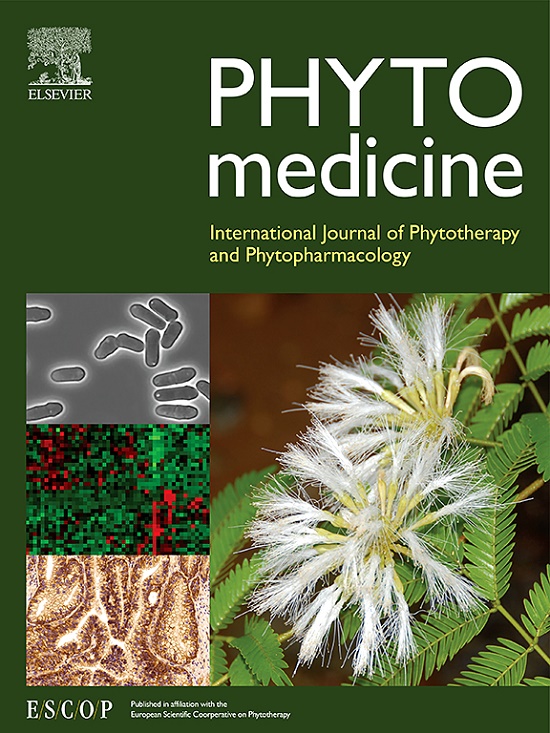Interdisciplinary integration strategy reveals the anti-inflammatory efficacy and potential mechanism of Jianpi Qingre Tongluo prescription in rheumatoid arthritis
IF 6.7
1区 医学
Q1 CHEMISTRY, MEDICINAL
引用次数: 0
Abstract
Background
Rheumatoid arthritis (RA) is an autoimmune disease characterized by chronic synovitis and associated with high rates of disability and systemic damage. Jianpi Qingre Tongluo prescription (Huangqin Qingre Chubi Capsule, HQC), an herbal formula with abundant clinical applications, has played a definite role in both clinical and experimental studies of RA. However, the specific mechanisms by which HQC relieves inflammation in RA have not been fully elucidated.
Objective
This study aimed to elucidate the anti-inflammatory efficacy and potential molecular mechanisms of HQC in RA and provide new targets and strategies for its clinical treatment.
Methods
An adjuvant-induced arthritis with damp-heat pattern rat model was established to observe the in vivo effects of HQC. Hematoxylin-eosin and toluidine blue staining, and enzyme-linked immunosorbent assay were used to assess potential efficacy. Bioinformatics methods and molecular docking were used to predict potential targets and intervention pathways in which HQC might act on RA. Clinical samples, overexpressed / silenced genes, and pathway agonists were selected to investigate the clinical relevance and regulatory relationships of the pathways. The regulatory mechanism of HQC was confirmed in an in vitro co-culture of neutrophils and fibroblast-like synoviocytes (FLSs) and an in vivo model.
Results
HQC dose-dependently reversed synovial pathological injury and systemic inflammatory responses in rats in vivo. Integrated bioinformatics and molecular docking identified the p38 mitogen-activated protein kinase (MAPK) signaling pathway and neutrophil extracellular trap (NET) formation as the key mechanisms by which HQC exerts anti-inflammatory effects on RA. Subsequently, a high correlation between circ0005732, p38 MAPK, and clinical features of RA was confirmed in clinical samples. In vitro experiments demonstrated that HQC alleviated the proliferation and inflammatory response of FLSs by regulating circ0005732 expression to inhibit NET formation driven by the p38 MAPK signaling pathway. Finally, RT-qPCR and western blotting confirmed that HQC modulated circ0005732, p38 MAPK pathway, and NET formation to alleviate RA in vivo.
Conclusion
HQC exerts therapeutic effects against RA by modulating circ0005732 to inhibit p38 MAPK signaling pathway-mediated NET generation and inflammation progression.

求助全文
约1分钟内获得全文
求助全文
来源期刊

Phytomedicine
医学-药学
CiteScore
10.30
自引率
5.10%
发文量
670
审稿时长
91 days
期刊介绍:
Phytomedicine is a therapy-oriented journal that publishes innovative studies on the efficacy, safety, quality, and mechanisms of action of specified plant extracts, phytopharmaceuticals, and their isolated constituents. This includes clinical, pharmacological, pharmacokinetic, and toxicological studies of herbal medicinal products, preparations, and purified compounds with defined and consistent quality, ensuring reproducible pharmacological activity. Founded in 1994, Phytomedicine aims to focus and stimulate research in this field and establish internationally accepted scientific standards for pharmacological studies, proof of clinical efficacy, and safety of phytomedicines.
 求助内容:
求助内容: 应助结果提醒方式:
应助结果提醒方式:


